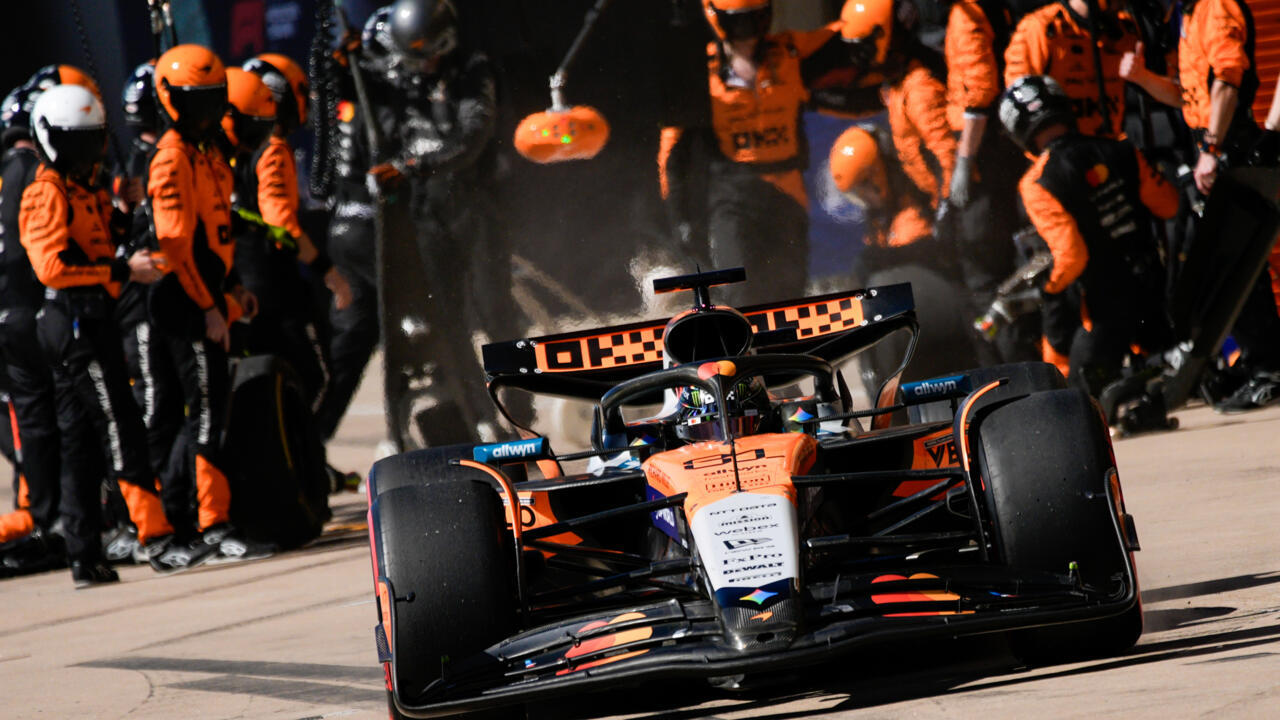The air at the Interlagos circuit in São Paulo always carries a particular charge, but this year, it was electric—the dense, heavy atmosphere of a title fight coming to a head. The 2025 Formula 1 World Championship, a story of fluctuating fortunes, emotional victories, and a rivalry turning increasingly iconic, arrived in Brazil carrying the weight of an entire season. This was not just another race weekend; it was the psychological epicenter of a battle between two young champions, Lando Norris and Oscar Piastri, fighting for McLaren glory.
Yet, when the cars rolled out onto the scorching asphalt for Sprint Qualifying, something felt fundamentally different. The tension was not merely about the title; it was sharper, closer, and more dangerously internal. By the end of the decisive session, Lando Norris had delivered a devastating blow, snatching his first sprint pole of the year. It was a perfectly timed, exquisitely driven lap that seized back control of the championship fight. But beneath the surface of that spectacular result lay a series of small, technical miscalculations and an internal strategic debate that is now being exposed as the moment the delicate balance within the McLaren garage finally tipped.

The Defining Lap and the Fractured Momentum
Oscar Piastri arrived in Brazil needing stability. After losing the championship lead in Mexico, he required a clean, controlled weekend to immediately rebuild his momentum. Instead, he walked straight into the kind of qualifying session that doesn’t just cost grid positions—it fractures a title challenge and dents a driver’s confidence.
Lando Norris, performing under immense psychological pressure, produced one of the most decisive laps of the season. His 1 minute 9.243 was executed in falling temperatures, swirling winds, and on a track that was changing corner by corner. This was more than just raw pace; it was a masterful display of control and nerve. Norris delivered that pole lap at the precise moment Piastri faltered, and that contrast is what makes the Brazilian weekend a potential championship decider.
While Norris was upbeat, praising the team for doing “the job we needed to do,” Piastri’s post-session tone was one championship contenders desperately try to avoid. He spoke of “big moments” on his crucial first flying lap—an unusual admission in the guarded language of F1. In practical terms, it means the car snapped aggressively, costing him critical confidence and, more importantly, compromising the preparation of his delicate soft tires. When soft tires lose temperature at Interlagos, even for a single corner, the momentum is lost, and they simply do not recover for the decisive run.
The Sensitive Truth: Unintentional Compromise
The immediate question that resonated around the paddock was simple: Why? Why did the car, which had shown strong pace, suddenly become a volatile entity for Piastri? The answer, while sensitive, points to a subtle, yet powerful, internal shift.
McLaren confirmed they had made setup adjustments on Piastri’s side of the garage between practice and sprint qualifying. These changes—subtle tweaks to suspension stiffness or a half-degree shift in camber—might appear minor on a data sheet. But in the unpredictable, rapid direction changes of Interlagos’s Sector 2, especially as track temperatures plummeted from a blistering 43°C to the mid-30s on the asphalt, those minute adjustments could have been the precise cause of the instability Piastri described.
This technical decision opens the door to a sensitive but ultimately unavoidable theory that now defines the tension within the team: Is McLaren, perhaps unintentionally and invisibly, gravitating toward a setup that gives Norris the most stable, most confident baseline?
This is not a conspiracy theory, but a hard reality of top-tier F1 racing. Teams, by their nature, gravitate toward the setup philosophy that best suits their fastest, most experienced, or currently leading driver. Over the course of a demanding season, the car’s development trajectory—its subtle evolution through setup changes and minor part adjustments—will almost invisibly lean toward one style more than the other.
Lando Norris, with more experience within the McLaren system, has evolved alongside the car’s quirks. He is often comfortable when the car slides—a trait that can be fast but requires supreme confidence. Piastri, though blindingly fast, prefers stability before turning, relying on a more planted rear end for maximum attack. In São Paulo, in the most critical qualifying session of his year, the stability Piastri desperately needed disappeared at the worst possible time. The subtle, yet unavoidable, bias towards Norris’s established preference has potentially resulted in an unintentional compromise to Piastri’s perfect setup window—a compromise that could now decide the world championship.

The Triple Threat: Antonelli, Verstappen, and the Clock
The drama was compounded by external factors. The insertion of Kimi Antonelli’s Mercedes between the two McLaren drivers was a major strategic blow, particularly for Piastri. Mercedes’ late-season improvement is tightening the title race, and Antonelli’s presence means Piastri has less space to attack Norris, more variables to manage on the starting grid, and a higher risk of getting caught behind a car with strong straight-line speed.
Meanwhile, the chaos surrounding Max Verstappen continues to swirl. The Red Bull driver’s radio messages—”the car is completely broken and undrivable”—suggest deep internal problems within the reigning champions’ camp. A sixth-place start is disastrous for a driver trying to claw back a 36-point deficit in the final four rounds. Yet, even a wounded Verstappen is dangerous. His brief ability to split the McLarens during the session showed he can still disrupt the rhythm, strategy, and mental composure of the title contenders.
This external pressure makes Piastri’s third-place finish far more damaging than it looks. He didn’t just lose two grid positions; he lost momentum, he lost the chance to maximize pressure on his teammate, and crucially, he lost the psychological advantage he desperately needed to reassert control in the championship fight.

The Sound of Silence: Paddock Whispers and Internal Pressure
Piastri’s post-session comments revealed a driver managing frustration, trying to stay calm but fully aware of the stakes. When he said he was “pretty happy overall,” it was the language of damage limitation, not the confident roar of a title contender.
Deep inside the paddock, one topic is being whispered with increasing volume: McLaren is entering dangerous territory. It’s not a team meltdown—they are too disciplined for that—but the subtle, silent tension inherent in two championship-capable drivers chasing the same dream. Engineers must choose who gets the priority run times; strategists must decide whose feedback dictates the final setup tweak. These are split-second choices that, however fair the intention, can inevitably favor one driver over the other. This is how internal pressure builds—quietly, silently—until a defining weekend like Brazil turns it into an unavoidable story line.
If Lando Norris extends his lead in São Paulo, the internal balance inside McLaren shifts definitively. Once momentum moves decisively in a title fight, it rarely returns cleanly. For Oscar Piastri, the sprint race and the Grand Prix have become more than mere opportunities; they are necessities. If he leaves Brazil trailing by more than a handful of points, the unforgiving mathematics of the championship will begin to twist irretrievably in Norris’s favour.
The question is no longer about raw speed, but about composure and strategy. Has Lando Norris just taken the decisive, psychological step toward becoming world champion? Or will Oscar Piastri strike back when the weather, the chaos, and the pressure of a subtle internal compromise collide on race day? Brazil is not just rewriting the 2025 championship story—it is exposing the ruthless reality of what it takes to win within a top team.





